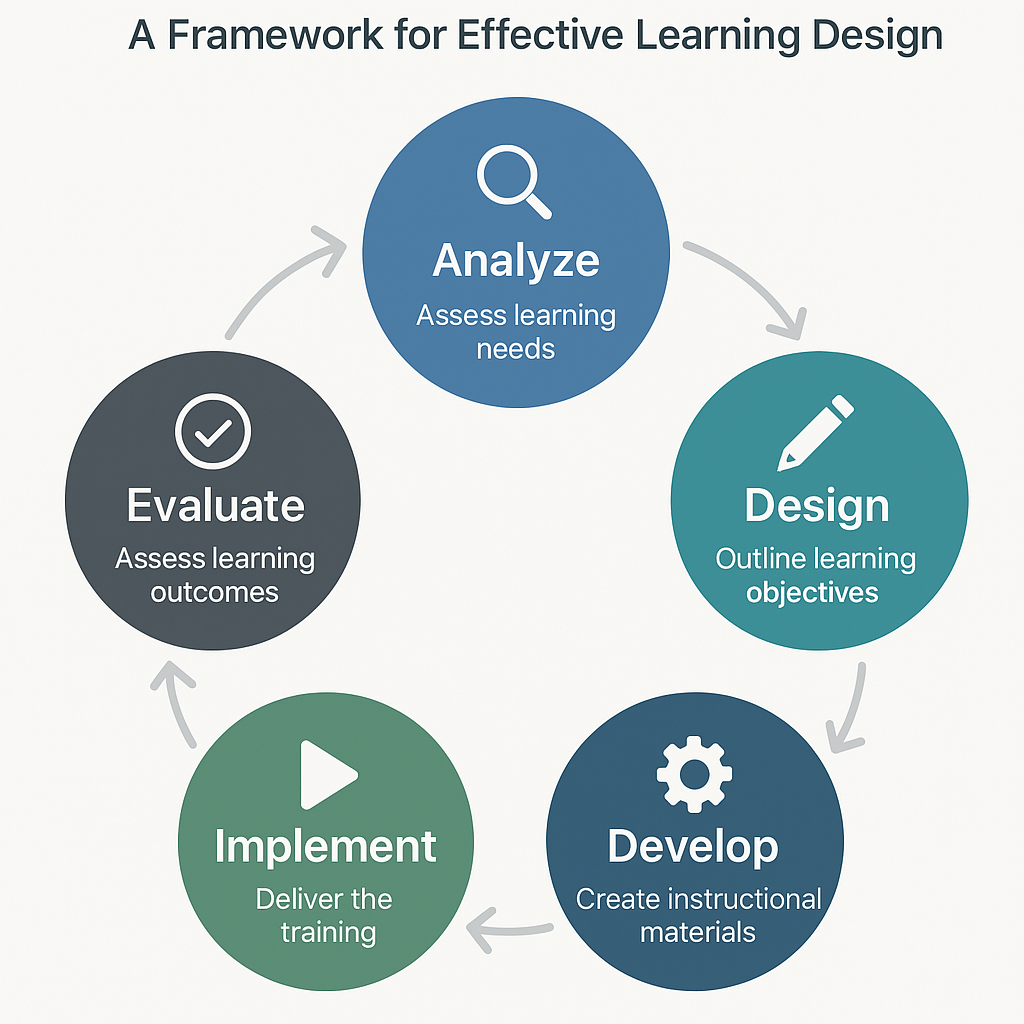Build Better Learning: The ADDIE Model Explained
The ADDIE Model is a time-tested framework used by instructional designers, educators, and trainers to create effective learning experiences. It stands for Analyze, Design, Develop, Implement, and Evaluate—a step-by-step process that ensures training is purposeful, learner-centered, and results-driven.
Why it Matters
ADDIE helps you move from vague ideas to structured, impactful learning. Whether you’re building a course, workshop, or eLearning module, ADDIE keeps your focus on what learners need and how to deliver it effectively.
The Five Phases
- Analyze – Identify learning needs, goals, and audience characteristics.
- Design – Plan learning objectives, content structure, and assessment strategies.
- Develop – Create the actual learning materials and activities.
- Implement – Deliver the training to learners.
- Evaluate – Measure effectiveness and refine for improvement.
How to Use It
- Start with a clear understanding of your learners and goals.
- Use each phase to guide your planning and execution.
- Continuously evaluate and adapt to ensure learning sticks.
ADDIE is flexible, iterative, and scalable—making it a go-to model for anyone serious about designing learning that works.
